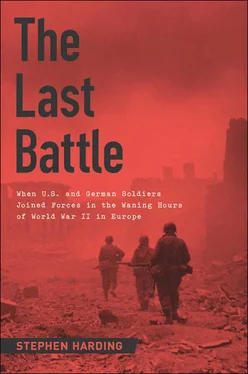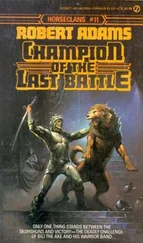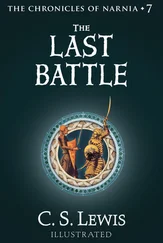3. Daladier, Prison Journal , 337.
4. The 142nd’s actions in support of the Schloss Itter rescue operation are drawn from Operations in Germany and Austria, 1–10 May 1945 , 4–6.
5. Battalion Diary for Month of May 1945 .
6. Levin was speaking in comparative terms: the high temperature in the area that day, according to the weather forecast included in the 103rd Infantry Division’s daily operations report for May 5, was 38 degrees F.
7. Levin, “We Liberated Who’s Who,” 96.
8. Ibid.
9. As it happened, Kramers’s small force was not the only 103rd ID unit operating in the 36th ID’s area. A small element of the division’s 103rd Reconnaissance Troop under the command of Lieutenant Herbert had reached the outskirts of Wörgl on the afternoon of May 4, spent the night, and was making its way back toward Innsbruck even as Kramers was arguing with the division’s chief of staff. The recon troops did not know about the French VIPs at Itter; the GIs’ only mission was to establish contact with the lead elements of the 36th ID and then return to Innsbruck to report that contact. How the two groups failed to encounter each other on the road along the Inn River remains a mystery. See Regimental History, 409th Infantry Regiment, 1–10 May 1945 , 68–71.
10. Levin, “We Liberated Who’ss Who,” 96.
11. Operations in Germany, 1–10 May 1945 , 70.
12. According to the account of the action in Resistance and Persecution in Austria, 1938–1945 (597), the weapon was a 2cm Flak 30.
13. Operations in Germany, 1–10 May 1945 , 70.
14. Ibid.
15. Paul Reynaud, in his In the Thick of the Fight (655), says that after the event he was informed by General Émile Antoine Béthouart, then commander of the French 1st Army Corps and postwar French high commissioner in Austria, that the Waffen-SS soldiers were there specifically to kill the French VIPs.
16. Resistance and Persecution in Austria, 1938–1945 , 598.
17. Cailliau de Gaulle, Souvenirs personnels , 101.
18. Interview with Arthur P. Pollock.
19. Ibid.
20. Fortunately for all concerned, Besotten Jenny ’s “wet” storage kept its 76mm main-gun ammunition from detonating.
21. Schrader, “Erinnerungen, Gedanken, Erkenntnisse.”
22. Ibid., and Léon-Jouhaux, Prison pour hommes d’Etat , 154.
23. Reynaud is using “tommy-gun” in the generic sense, to mean any type of submachine gun. The weapon he wielded during the fight for the castle was actually a German MP-40 machine pistol.
24. Reynaud, In the Thick of the Fight , 655.
25. Cailliau de Gaulle, Souvenirs personnels , 101.
26. Interview with Edward J. Seiner.
27. Interview with Pollock.
28. Reynaud, In the Thick of the Fight , 655.
29. Levin, “We Liberated Who’s Who,” 98.
30. Ibid.
31. Ibid.
32. Gill was himself a bona fide hero; just over two weeks earlier he’d personally led an attack on an enemy position that ultimately resulted in his being decorated with the Distinguished Service Cross, the nation’s second-highest military award for valor.
33. Levin, “We Liberated Who’s Who,” 98.
34. Ibid.
35. Operations in Germany and Austria, 1–10 May 1945 , 2. Mühltal, as mentioned earlier in this volume, is about a mile northeast of Schloss Itter, on the road from Wörgl east to Söll.
36. Unit Journal, 1–10 May 1945 , 53.
37. Levin, “We Liberated Who’s Who,” 98.
38. Ibid.
39. Ibid.
40. Ibid.
41. Indeed, the Brixentaler Ache is still a popular destination for whitewater kayakers.
42. He was also the postwar founder of the separatist Parti Québécois and a prime mover in his province’s attempts to gain political independence from the Canadian Confederation.
43. Lévesque, Memoires , 96–99.
44. Ibid., 98.
45. Léon-Jouhaux, Prison pour hommes d’Etat , 156. See also Smyth, Jean Borotra, the Bounding Basque , 157–158.
46. Léon-Jouhaux, Prison pour hommes d’Etat , 157.
47. Operations in Germany and Austria, 1–10 May 1945 .
48. Ibid.
49. Levin, “We Liberated Who’s Who,” 98.
50. Daladier, Prison Journal , 338.
51. Ibid.
1. Levin, “We Liberated Who’s Who,” 98.
2. Schrader, “Erinnerungen, Gedanken, Erkenntnisse,” 36. The reason for Čučković’s outburst is unclear; he almost certainly would have encountered Schrader—both in civilian clothes and in uniform—during the latter’s earlier visits to Schloss Itter. We can only assume that the now-free Čučković felt that he could display his true feelings about the man wearing the death’s-head collar insignia that was the symbol of so much horror and tragedy throughout Europe.
3. Levin, “We Liberated Who’s Who,” 98.
4. Lévesque, Memoires , 98–99.
5. A nickname given to the solidly built Daladier years earlier by the Parisian press.
6. Lévesque, Memoires , 98–99.
7. Ibid.
8. Operations in Germany and Austria, 1–10 May 1945 , 3.
9. Cailliau de Gaulle, Souvenirs personnels , 102–105, and Daladier, Prison Journal , 340–341.
10. Čučković, “Zwei Jahren auf Schloss Itter,” 68–69.
11. Late in 1945 Schloss Itter was purchased by Wilhelm Woldrich, an Innsbruck hotelier who completely refurbished the castle and added an outdoor swimming pool and a larger garage. In 1964 the Hotel Schloss Itter was sold to a Frau Bettina McDuff, who in 1972 sold it to a Lichtenstein-based company, which, according to some sources, was owned at least in part by one-time Austrian Formula 1 race driver Niki Lauda. In the late 1980s the castle was purchased by Dr. Ernst Bosin, an Austrian attorney with offices in Kufstein, Wörgl, and Orlando, Florida. The hotel ceased operation about that time and has been closed to the public since then.
Читать дальше












